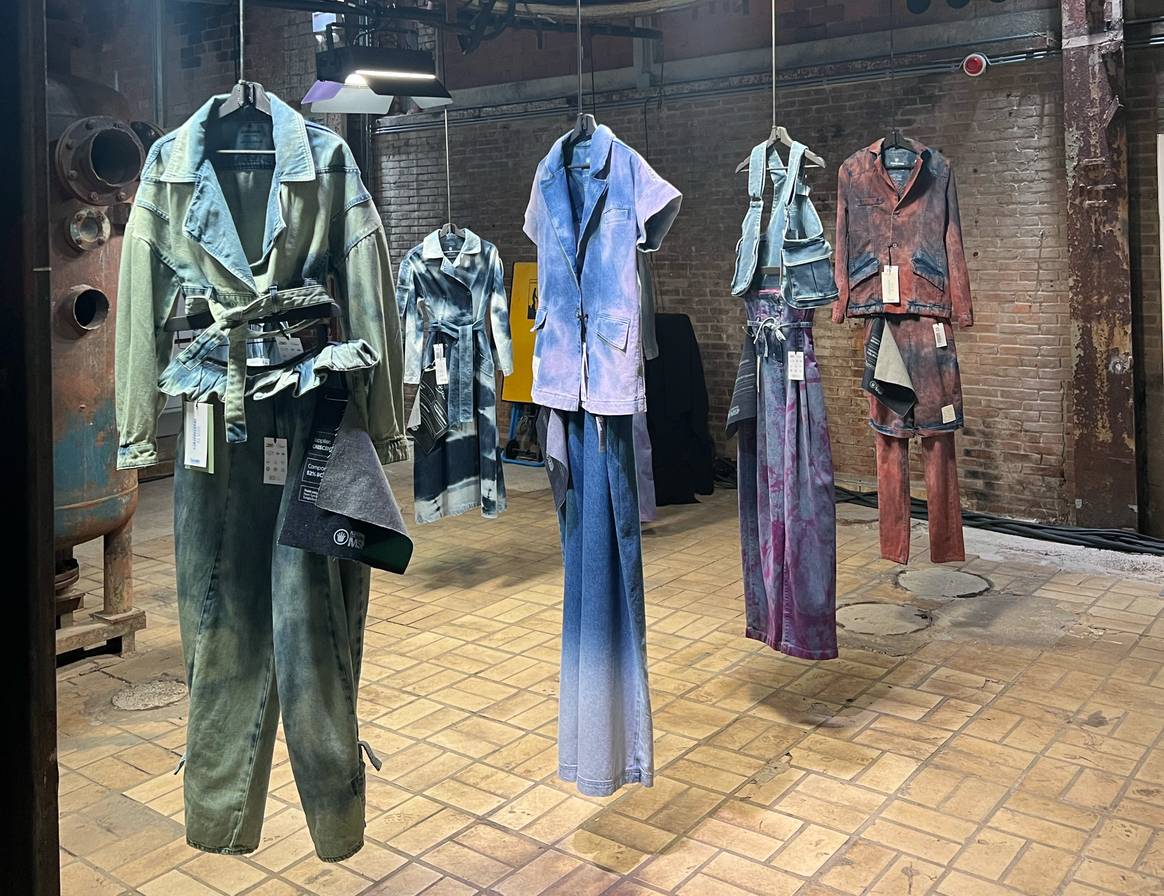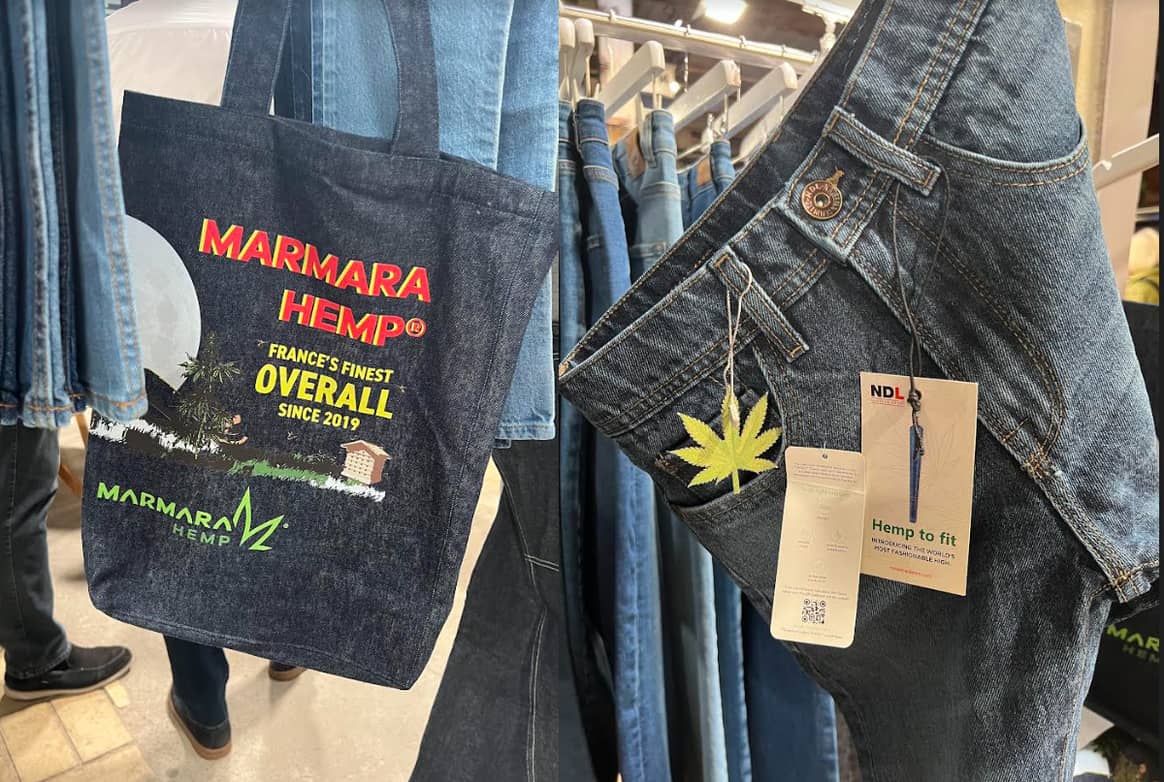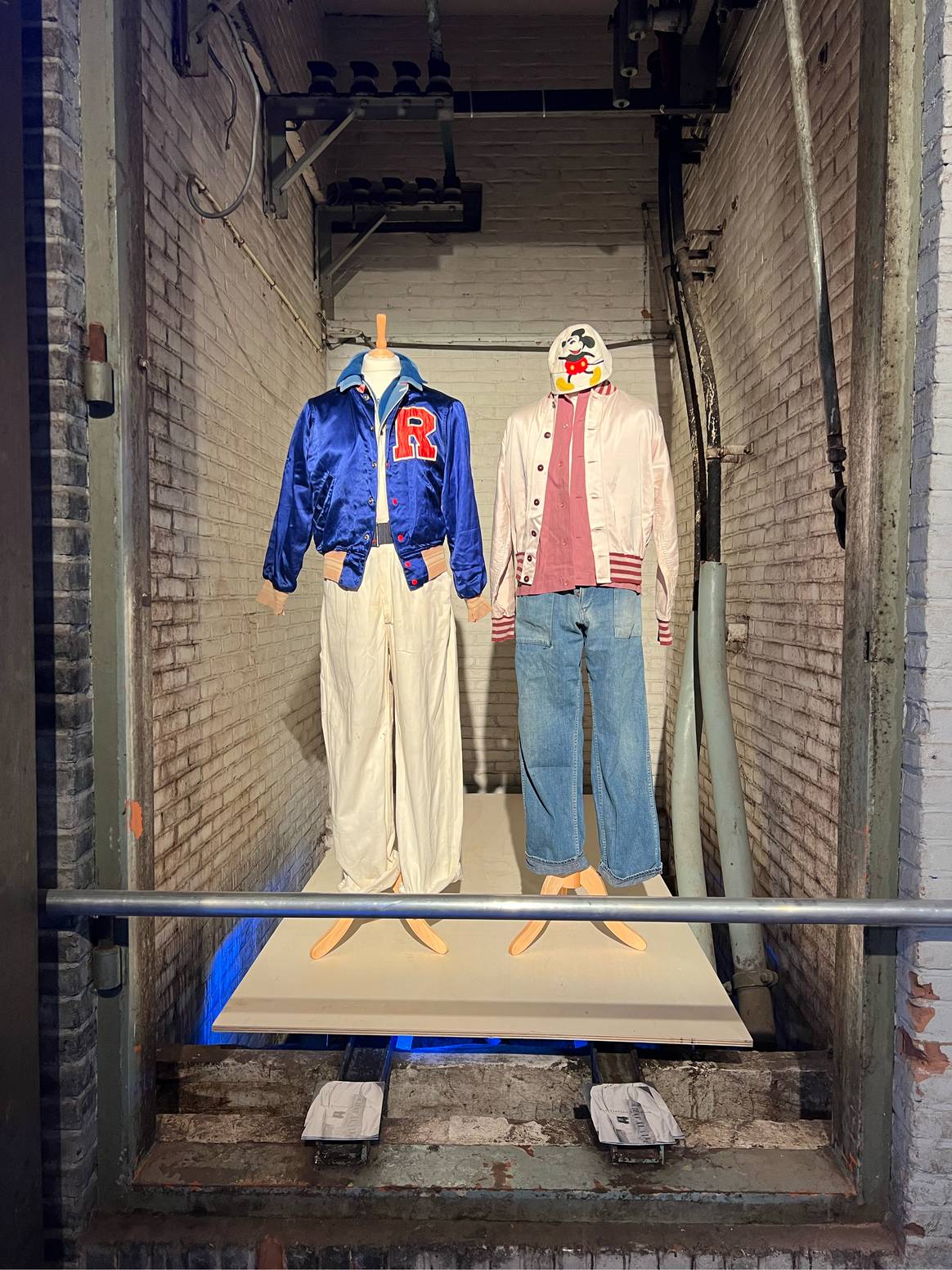Engaged in the clothing industry for 20 years.

The pursuit of sustainability takes on new forms at Kingpins
For those who visited denim fair Kingpins for the first time this week, the entrance to the fair was easy to find from the nearby train station. A zipline of denim-clad people streamed in the same direction and even before the fair opened, a queue formed in front of the event venue SugarCity in Amsterdam. Again this year, visitors came from all over, some still with their wheeled suitcases in hand. In the queue, pictures were taken of the most striking all-denim outfits. The cheerful atmosphere and the sight of acquaintances already running into each other outside in the queue raised expectations of a lively edition.
Exploring the exhibition floor, where, like last year, almost 100 exhibitors could be found, it appeared that solutions for sustainability were leading this edition. Although this topic has been relevant for several years, it is now taking on new forms, according to talks with exhibitors, who stated that brands were more often daring to take the next step in this area, in regards to time or money. Likewise, longer-established techniques that have gained more enthusiasm recently are being put in the spotlight. Visitors and exhibitors spoke about upcoming European legislation on sustainability and the expectations of Gen Z. Terms like zero-waste, low-emission and deadstock were everywhere, often in conjunction with a wide range of certificates. The stands that did not promote sustainable promises stood out as exceptions.
As in the last edition, topics such as inflation and supply chain issues were little discussed. Attendees assumed a recovering trend in the short term or saw the challenging economic conditions now more as business as usual. Although exhibitors – when FashionUnited asked them about it – acknowledged that it still complicates business, they preferred to focus on the opportunities.

Exhibitors at Kingpins: ‘Brands are increasingly taking the next step for sustainability’
“Everyone wants sustainability” is the message that came first at
almost all the stands that FashionUnited visited. Melahat Ustundag, responsible for
sales and marketing at Kilim Denim, also explained how, by now, everyone is asking
for sustainable techniques. A latest development, she said, is that biodegradable
clothes in particular have recently become in demand. “That is why we are
pushing these kinds of innovations extra,” she noted. Among others, Kilim utilised Asahi Kasei’s innovation Roica V550, the first biodegradable stretch yarn, which is also used in collections by Artistic Milliners, Candiani and Prosperity, each shown at the fair.
At the stand of yarn manufacturer Asahi Kasei, Hiroaki Shinohe, assistant manager Roica Division, explained that the Roica V550 yarn was not originally intended as an innovative sustainability solution at all. In 2016, “when the sustainability trend was experiencing a boost”, Roica decided to test the alternative yarn for biodegradability, he explained. Thus, it was marketed as a sustainable option. Promotion of the yarn began some five years ago, but the use of biodegradable materials was not as “booming” then as it is now, according to Shinohe, so large-scale success lagged behind. “Brands back then were looking more for recycled materials, such as the pre-consumer recycled Roica EF.” Meanwhile, interest in biodegradable materials has grown significantly, said Shinohe, beaming Ustundag’s observation. But, this does depend on the material, according to him. “In the cotton and tencel market, this is common, but for polyamide and polyester, it is still mainly about recycled materials. Synthetic materials cannot be so easily combined with V550.”
Hemp has also recently begun to be more frequently considered as the next step in achieving sustainability goals, said Marta Cabo, design director of Artistic Denim Mills (ADM). “Here at the booth, we mainly discuss fabrics, construction and sustainability. Everyone wants to know how it can be more sustainable. Recycled cotton is a good start here, but some brands go a step further, with hemp, for example.” However, the high cost of Hemp is still a barrier for a lot of brands, according to Cabo. “If it were more affordable, everyone would use it. I hope we will see it hanging in more shops in the future.”
French hemp producer Marmara Hemp seemed to be capitalising on this with its “first certified sustainable cottonised hemp fibre”. At first glance, this description, seen on a poster at the booth, raised questions. What exactly is a cottonised hemp fibre? According to Hervé Denoyelle, Marmara’s vice president of sales and marketing, this is the question he received the most that afternoon. In a nutshell, cottonised hemp is a hemp fibre that has been modified so that it can be spun in the same way as cotton, Denoyelle explained. “As cotton is more widely used, this makes hemp more affordable. After all, there are many thousands of cotton mills on the planet, a lot more than hemp mills.”
Denoyelle confirmed Cabo’s view that hemp is increasingly being considered by brands looking to develop their sustainability. “This technology has been around for a while, but it is noticeable that there is more demand for it lately.” Despite inflation and problems in the supply chain, Denoyelle said brands are increasingly aware of their responsibilities. “Of course, there is still a lot of greenwashing, but I think the initiatives are more often genuine. This is mainly because of how consumers are acting. They are more and more knowledgeable.” However, price is still a limiting factor, according to the hemp producer, “but that is precisely where our product can play a role.”

Legal changes prompt denim players to explore new options
Sourcing platform Material Exchange launched their ‘deadstock depot’, a new digital platform where their network of mills display deadstock, which clothing brands could then order on the opening day of Kingpins. The stand was busy and the company’s head of strategy, Ben Felton, said they were having a good day so far. “Deadstock is a big issue that has only recently been understood. With Gen Z increasingly moving away from fast fashion, I think we have reached a point where brands are willing to try more drastic ways of sustainable production. But, they don’t want to flip everything yet. That’s why brands are now mainly looking at limited editions, for example, to test the market for new sustainable techniques. It is not yet commercial enough to really dive in. This kind of movement is still in its infancy, but is experiencing growth.”
Regulation and legislation is an important factor here, according to Felton. “Changes in legislation are forcing brands to test new sustainability methods, so to speak.” In this, he said, there is not only interest from brands themselves, but also from the government. For instance, Felton noted that earlier in the day, another government representative was at his stand. From which country he preferred not to explain, but Felton did give away that the visitor represented the manufacturing industry and wanted to do something with deadstock to solve waste problems.
A host of other stands also featured upcoming legislation. Nienke Steen, head of clothing, textiles and footwear at Cradle to Cradle Products Innovation Institute, saw new regulations as necessary to get consumers and masses on board. “Young people do not seek out expensive, innovative collections easily, which is often not feasible in terms of budget. Instead, they now look for it in the second-hand corner. Through legislation, large-scale solutions can emerge which in turn are more affordable.”
The fair also showcased more accessible ways to produce denim designs more sustainably. For example, denim factory Crescent Bahuman wanted to avoid sending out samples unnecessarily with their ‘handfeel index’. “One problem with denim is that you really have to feel the fabric to decide if you want to go ahead with it,” Abdullah Zia, assistant vice president of Crescent Bahuman, explained. “That’s why we developed a rating for how soft the cotton is. This way, people can still get a good impression from a photo and description. The initiative was born in the corona period, but we want to continue with it because it can reduce the carbon footprint.” However, Zia was also realistic about the time it will take to make a sustainable method the norm. “It will take at least another two to five years before the tool is really taken up. There is a barrier to break through.”
All in all, Kingpins gave a clear representation of how far the denim industry is taking steps towards more sustainable practices. Technologies and materials previously considered too high-minded by factories and brands are now slowly but surely being seen as increasingly accessible. Developers of new technologies and methods foresee the same path for their products, whether simple or complex. It takes time for what is new to grow into the norm, but at least the conversations held on the show floor already seem to be helping with this.

This article originally appeared on FashionUnited.NL. Translation and edit by: Rachel Douglass.